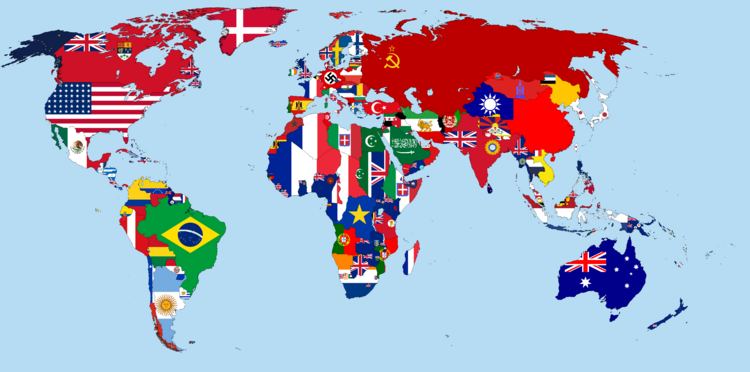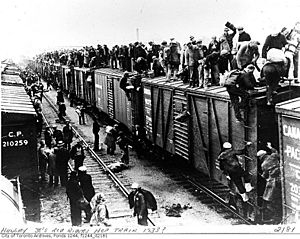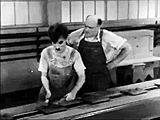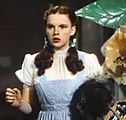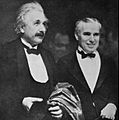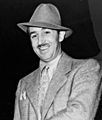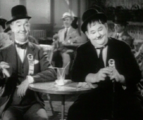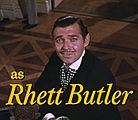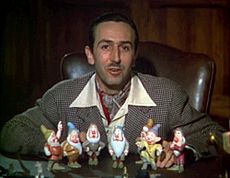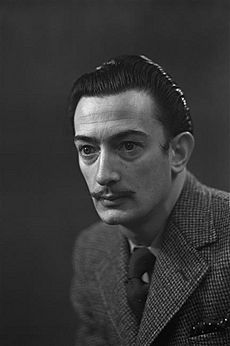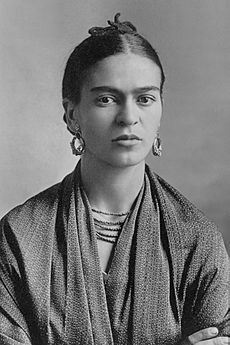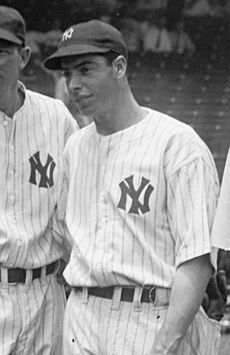1930s facts for kids
The 1930s (pronounced "nineteen-thirties" and commonly abbreviated as "the '30s" or "the Thirties") was a decade that began on January 1, 1930, and ended on December 31, 1939. In the United States, the Dust Bowl led to the nickname the "Dirty Thirties".
The decade was defined by a global economic and political crisis that culminated in the Second World War.
Wars
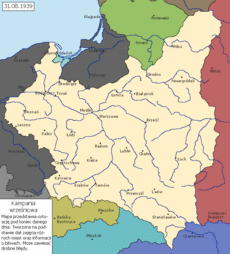
- Colombia–Peru War (September 1, 1932 – May 24, 1933) – fought between the Republic of Colombia and the Republic of Peru
- Chaco War (June 15, 1932 – June 10, 1935) – fought between Bolivia and Paraguay over the disputed territory of Gran Chaco, resulting in a Paraguayan victory in 1935; an agreement dividing the territory was made in 1938, formally ending the conflict
- Saudi–Yemeni War (March 1934 – May 12, 1934) – fought between Saudi Arabia and the Mutawakkilite Kingdom of Yemen
- Second Italo-Ethiopian War (October 3, 1935 – February 19, 1937)
- Second Sino-Japanese War (July 7, 1937 – September 9, 1945) – fought between the Republic of China and the Empire of Japan. It was the largest Asian war of the 20th century, and made up more than 50% of the casualties in the Pacific theater of World War II.
- World War II (September 1, 1939 – September 2, 1945) – global war centered in Europe and the Pacific but involving the majority of the world's countries, including all of the major powers such as Germany, Russia, America, Italy, Japan, France and the United Kingdom.
Economics
- The Great Depression is considered to have begun with the fall of stock prices on September 4, 1929, and then the stock market crash known as Black Tuesday on October 29, 1929, and lasted through much of the 1930s.
- The entire decade is marked by widespread unemployment and poverty, although deflation (i.e. falling prices) was limited to 1930–32 and 1938–39. Prices fell 7.02% in 1930, 10.06% in 1931, 9.79% in 1932, 1.41% in 1938 and 0.71% in 1939.
- Economic interventionist policies increase in popularity as a result of the Great Depression in both authoritarian and democratic countries. In the Western world, Keynesianism replaces classical economic theory.
- In an effort to reduce unemployment, the United States government created work projects such as the Civilian Conservation Corps (CCC) which was a public work relief program that operated from 1933 to 1942 to maintain National Parks and build roads. Other major U.S. government work projects included Hoover Dam which was constructed between 1931 and 1936.
- Rapid industrialization takes place in the Soviet Union.
- Prohibition in the United States ended in 1933. On December 5, 1933, the ratification of the Twenty-first Amendment repealed the Eighteenth Amendment to the United States Constitution.
- Drought conditions in Oklahoma and Texas caused the Dust Bowl which forced tens of thousands of families to abandon their farms and seek employment elsewhere.
Science and technology
Technology
Many technological advances occurred in the 1930s, including:
- On March 8, 1930, the first frozen foods of Clarence Birdseye were sold in Springfield, Massachusetts, United States.
- Nestlé releases the first white chocolate candy as the Milkybar.;
- Ub Iwerks produced the first Color Sound Cartoon in 1930, a Flip the Frog cartoon entitled "Fiddlesticks";
- In 1930, Warner Brothers released the first All-Talking All-Color wide-screen movie, Song of the Flame; in 1930 alone, Warner Brothers released ten All-Color All-Talking feature movies in Technicolor and scores of shorts and features with color sequences;
- Air mail service across the Atlantic Ocean began;
- Radar was invented, known as RDF (Radio Direction Finding), such as in British Patent GB593017 by Robert Watson-Watt in 1938;
- In 1933, the 3M company marketed Scotch Tape;
- In 1931, RCA Victor introduced the first long-playing phonograph record.
- In 1935, the British London and North Eastern Railway introduced the A4 Pacific, designed by Nigel Gresley. Just three years later, one of these, No. 4468 Mallard, would become the fastest steam locomotive in the world.
- In 1935, Kodachrome is invented, being the first color film made by Eastman Kodak.
- In 1936, The first regular high-definition (then defined as at least 200 lines) television service from the BBC, based at Alexandra Palace in London, officially begins broadcasting.
- Nuclear fission discovered by Otto Hahn, Lise Meitner and Fritz Strassman in 1939.
- The Volkswagen Beetle, one of the best selling automobiles ever produced, had its roots in Nazi Germany in the late 1930s. Created by Ferdinand Porsche and his chief designer Erwin Komenda. The car would prove to be successful, and is still in production today as the New Beetle.
- In 1935, Howard Hughes, flying the H-1, set the landplane airspeed record of 352 mph (566 km/h).
- In 1937, flying the same H-1 Racer fitted with longer wings, the ambitious Hughes sets a new transcontinental airspeed record by flying non-stop from Los Angeles to Newark in 7 hours, 28 minutes, and 25 seconds (beating his own previous record of 9 hours, 27 minutes). His average ground speed during the flight was 322 mph (518 km/h).
- First intercontinental commercial airline flights.
- The chocolate chip cookie is developed in 1938 by Ruth Graves Wakefield.
- The Frying Pan becomes the first electric lap steel guitar ever produced.
- Edwin Armstrong invents wide-band frequency modulation radio in 1933.
- The bass guitar is invented by Paul Tutmarc of Seattle, Washington, in 1936.
Science
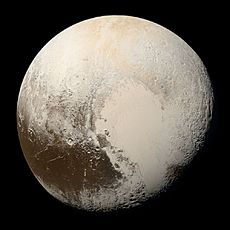
- Astronomer Clyde Tombaugh discovers Pluto in 1930, which goes on to be announced as the ninth planet in the Solar System.
- Albert Einstein's equations form the basis for creation of the atomic bomb.
Popular culture
Literature and art
- Height of the Art Deco movement in North America and Western Europe.
- Notable poetry include W. H. Auden's Poems.
- Notable literature includes F. Scott Fitzgerald's Tender Is the Night (1934), T. H. White's The Sword in the Stone (1938), J. R. R. Tolkien's The Hobbit (1937), Aldous Huxley's Brave New World (1932), John Steinbeck's Grapes of Wrath (1939) and Of Mice and Men (1937), Ernest Hemingway's To Have and Have Not (1937), John Dos Passos's U.S.A trilogy, William Faulkner's As I Lay Dying (1930) and Absalom, Absalom! (1936), John O'Hara's Appointment in Samarra (1934) and Butterfield 8 (1935), and Margaret Mitchell's Gone with the Wind (1936), which was later famously adapted into a film in 1939.
- Notable "hardboiled" crime fiction includes Raymond Chandler's The Big Sleep, Dashiell Hammett's The Maltese Falcon, James M. Cain's The Postman Always Rings Twice (1934).
- Notable plays include Thornton Wilder's Our Town (1938).
- Near the end of the decade, two of the world's most iconic superheroes and recognizable fictional characters were introduced in comic books; Superman first appeared in 1938, and Batman in 1939.
- The pulp fiction magazines begin to feature distinctive, gritty adventure heroes that combine elements of hard-boiled detective fiction and the fantastic adventures of earlier pulp novels. Two particularly noteworthy characters introduced during this time are Doc Savage and The Shadow, who would later influence the creation of characters such as Superman and Batman.
- Popular comic strips which began in the 1930s include Captain Easy by Roy Crane, Alley Oop by V. T. Hamlin, Prince Valiant by Hal Foster, and Flash Gordon by Alex Raymond.
- David Alfaro Siqueiros paints the controversial mural América Tropical (full name: América Tropical: Oprimida y Destrozada por los Imperialismos, or Tropical America: Oppressed and Destroyed by Imperialism) (1932) at Olvera Street in Los Angeles, California.
Best-selling books
The best-selling books of every year in the United States were as follows:
- 1930: Cimarron by Edna Ferber
- 1931: The Good Earth by Pearl S. Buck
- 1932: The Good Earth by Pearl S. Buck
- 1933: Anthony Adverse by Hervey Allen
- 1934: Anthony Adverse by Hervey Allen
- 1935: Green Light by Lloyd C. Douglas
- 1936: Gone with the Wind by Margaret Mitchell
- 1937: Gone with the Wind by Margaret Mitchell
- 1938: The Yearling by Marjorie Kinnan Rawlings
- 1939: The Grapes of Wrath by John Steinbeck
Film
- Charlie Chaplin's groundbreaking classic, "City Lights", was released in 1931.
- Charlie Chaplin's last film featuring his signature character, "The Tramp", was subsequently released in 1936.
- Walt Disney's Snow White and the Seven Dwarfs was released in 1937.
- The Little Princess was released in 1939.
- The Wizard of Oz was released in 1939.
- In the art of filmmaking, the Golden Age of Hollywood enters a new era after the advent of talking pictures ("talkies") in 1927 and full-color films in 1930: more than 50 classic films were made in the 1930s; most notable were Gone With The Wind and The Wizard of Oz.
- The new soundtrack and photographic technologies prompted many films to be made or re-made, such as the 1934 version of Cleopatra, using lush art deco sets, which won an Academy Award (see films 1930–1939 in Academy Award for Best Cinematography).
- Universal Pictures begins producing its distinctive series of horror films, which came to be known as the Universal Monsters, featuring what would become iconic representations of literary and mythological monsters. The horror films (or monster movies) included many cult classics, such as Dracula, Frankenstein, The Mummy, Dr. Jekyll and Mr. Hyde, King Kong, The Hunchback of Notre Dame, and other films about wax museums, vampires, and zombies, leading to the 1941 film The Wolf Man. These films led to the stardom of stars such as Bela Lugosi, Lon Chaney Jr, and Boris Karloff.
- Recurring series and serials included The Three Stooges, Laurel and Hardy, the Marx Brothers, Tarzan, Charlie Chan and Our Gang.
- In 1930, Howard Hughes produces Hell's Angels, the first movie blockbuster to be produced outside of a professional studio, independently, and at the time the most expensive movie ever made, costing roughly 4 million dollars and taking four years to make.
-
Charlie Chaplin in a scene from the film Modern Times (1936)
-
Judy Garland as Dorothy Gale in The Wizard of Oz (1939)
-
Albert Einstein with Charlie Chaplin during the premiere of "City Lights" (1931)
Highest-grossing films
| Year | Title | Worldwide gross | Budget | Reference(s) |
|---|---|---|---|---|
| 1930 | All Quiet on the Western Front | 3,000,000 | 1,250,000 | |
| 1931 | Frankenstein | 12,000,000 (1,400,000) | 250,000 | |
| City Lights | 5,000,000 | 1,607,351 | ||
| 1932 | The Sign of the Cross | 2,738,993 | 694,065 | |
| 1933 | King Kong | 5,347,000 (1,856,000) | 672,255.75 | |
| I'm No Angel | 3,250,000+ | 200,000 | ||
| Cavalcade | 3,000,000–4,000,000 | 1,116,000 | ||
| She Done Him Wrong | 3,000,000+ | 274,076 | ||
| 1934 | The Merry Widow | 2,608,000 | 1,605,000 | |
| It Happened One Night | 2,500,000 | 325,000 | ||
| 1935 | Mutiny on the Bounty | 4,460,000 | 1,905,000 | |
| 1936 | San Francisco | 6,044,000+ (5,273,000) | 1,300,000 | |
| 1937 | Snow White and the Seven Dwarfs | 418,000,000+ (8,500,000) | 1,488,423 | |
| 1938 | You Can't Take It With You | 5,000,000 | 1,200,000 | |
| 1939 | Gone with the Wind | 390,525,192–402,352,579
(32,000,000) |
3,900,000–4,250,000 |
Radio

- Radio becomes dominant mass media in industrial nations, serving as a way for citizens to listen to music and get news- providing rapid reporting on current events.
- October 30, 1938 – Orson Welles' radio adaptation of The War of the Worlds is broadcast, causing panic in various parts of the United States.
Music
- "Swing" music starts becoming popular from 1933, the dawn of the Swing era. It gradually replaces the sweet form of Jazz that had been popular for the first half of the decade.
- "Delta Blues" music, the first recorded in the late 1920s, was expanded by Robert Johnson and Skip James, two of the most important and influential acts of "Blues" genre.
- Django Reinhardt and Stéphane Grappelli led the development of Gypsy jazz.
- Sergei Rachmaninoff composed Rhapsody on a Theme of Paganini in 1934.
- Charlie Christian becomes the first electric guitarist to be in a multiracial band with Benny Goodman and Lionel Hampton in 1939.
The most popular music of each year was as follows:
- 1930: Body and Soul (music by Johnny Green, lyrics by Edward Heyman, Robert Sour and Frank Eyton)
- 1931: Life Is Just a Bowl of Cherries (music by Ray Henderson, lyrics by Lew Brown)
- 1932: Night and Day (Cole Porter)
- 1933: It’s Only a Paper Moon (music by Harold Arlen, lyrics by Yip Harburg and Billy Rose)
- 1934: Blue Moon (written by Richard Rodgers and Lorenz Hart)
- 1935: Begin the Beguine (Cole Porter)
- 1936: I'm an Old Cowhand (written by Johnny Mercer, sung by Bing Crosby)
- 1937: A Foggy Day (composed by George Gershwin, with lyrics by Ira Gershwin)
- 1938: Chiquita Banana
- 1939: All the Things You Are (composed by Jerome Kern with lyrics written by Oscar Hammerstein II)
Fashion
The most characteristic North American fashion trend from the 1930s to 1945 was attention at the shoulder, with butterfly sleeves and banjo sleeves, and exaggerated shoulder pads for both men and women by the 1940s. The period also saw the first widespread use of man-made fibers, especially rayon for dresses and viscose for linings and lingerie, and synthetic nylon stockings. The zipper became widely used. These essentially U.S. developments were echoed, in varying degrees, in Britain and Europe. Suntans (called at the time "sunburns") became fashionable in the early 1930s, along with travel to the resorts along the Mediterranean, in the Bahamas, and on the east coast of Florida where one can acquire a tan, leading to new categories of clothes: white dinner jackets for men and beach pajamas, halter tops, and bare midriffs for women.
Revolutionary designer and couturier Madeleine Vionnet gained popularity for her bias-cut technique, which clung, draped, and embraced the curves of the natural female body. Fashion trendsetters in the period included The Prince of Wales (King Edward VIII from January 1936 until his abdication that December) and his companion Wallis Simpson (the Duke and Duchess of Windsor from their marriage in June 1937), socialites like Nicolas de Gunzburg, Daisy Fellowes and Mona von Bismarck, and Hollywood movie stars such as Fred Astaire, Carole Lombard, and Joan Crawford.
Typical fashions in the 1930s:
Architecture

- The world's tallest building (for the next 35 years) was constructed, opening as the Empire State Building on May 3, 1931, in New York City.
- The Golden Gate Bridge was constructed, opening on May 27, 1937, in San Francisco, USA.
Visual arts
Social realism became an important art movement during the Great Depression in the United States in the 1930s. Social realism generally portrayed imagery with socio-political meaning. Other related American artistic movements of the 1930s were American scene painting and Regionalism which were generally depictions of rural America, and historical images drawn from American history. Precisionism with its depictions of industrial America was also a popular art movement during the 1930s in the USA. During the Great Depression the art of photography played an important role in the Social Realist movement. The work of Dorothea Lange, Walker Evans, Margaret Bourke-White, Lewis Hine, Edward Steichen, Gordon Parks, Arthur Rothstein, Marion Post Wolcott, Doris Ulmann, Berenice Abbott, Aaron Siskind, Russell Lee, Ben Shahn (as a photographer) among several others were particularly influential.
The Works Progress Administration part of the Roosevelt Administration's New Deal sponsored the Federal Art Project, the Public Works of Art Project, and the Section of Painting and Sculpture which employed many American artists and helped them to make a living during the Great Depression.
Mexican muralism was a Mexican art movement that took place primarily in the 1930s. The movement stands out historically because of its political undertones, the majority of which of a Marxist nature, or related to a social and political situation of post-revolutionary Mexico. Also in Latin America Symbolism and Magic Realism were important movements.
In Europe during the 1930s and the Great Depression, Surrealism, late Cubism, the Bauhaus, De Stijl, Dada, German Expressionism, Symbolist and modernist painting in various guises characterized the art scene in Paris and elsewhere.
- The 1932 Winter Olympics were hosted by the village of Lake Placid, New York, United States.
- The 1932 Summer Olympics were hosted by the city of Los Angeles, California, United States.
- The 1934 FIFA World Cup was hosted and won by Italy.
- The 1936 Winter Olympics were hosted by the market town of Garmisch-Partenkirchen, Bavaria, Germany.
- The 1936 Summer Olympics were hosted by the city of Berlin, Germany. These were the last Summer or Winter Olympic Games held until 1948.
- The 1938 FIFA World Cup was hosted by France and won by Italy. This was the last FIFA World Cup held until 1950.
People
Actors/entertainers
- Fred Allen
- Jean Arthur
- Fred Astaire
- Mary Astor
- Gene Autry
- Tallulah Bankhead
- Warner Baxter
- Wallace Beery
- Constance Bennett
- Joan Bennett
- Jack Benny
- Charles Bickford
- Joan Blondell
- Humphrey Bogart
- Charles Boyer
- Mary Brian
- Louise Brooks
- Fanny Brice
- James Cagney
- Eddie Cantor
- Frank Capra
- John Carradine
- Madeleine Carroll
- Charlie Chaplin
- Claudette Colbert
- Ronald Colman
- Katharine Cornell
- Gary Cooper
- Joan Crawford
- Bing Crosby
- Bette Davis
- Marlene Dietrich
- Walt Disney
- Robert Donat
- Irene Dunne
- Deanna Durbin
- Ann Dvorak
- Nelson Eddy
- Alice Faye
- Errol Flynn
- Henry Fonda
- Joan Fontaine
- John Ford
- Kay Francis
- Dwight Frye
- Clark Gable
- Carlos Gardel
- Eva Le Gallienne
- Greta Garbo
- Judy Garland
- Janet Gaynor
- Cary Grant
- Lillian Gish
- Jean Harlow
- Olivia de Havilland
- Helen Hayes
- Katharine Hepburn
- Bob Hope
- Miriam Hopkins
- Leslie Howard
- Boris Karloff
- Buster Keaton
- Laurel and Hardy
- Dorothy Lamour
- Charles Laughton
- Vivien Leigh
- Carole Lombard
- Myrna Loy
- Bela Lugosi
- Fredric March
- The Marx Brothers
- Jeanette MacDonald
- Fred MacMurray
- Herbert Marshall
- Ethel Merman
- Robert Montgomery
- Paul Muni
- Merle Oberon
- Laurence Olivier
- Maureen O'Sullivan
- William Powell
- Tyrone Power
- George Raft
- Luise Rainer
- Basil Rathbone
- Ronald Reagan
- Dolores del Río
- Edward G. Robinson
- Ginger Rogers
- Will Rogers
- Cesar Romero
- Mickey Rooney
- Rosalind Russell
- Randolph Scott
- Sebastian Shaw
- Norma Shearer
- James Stewart
- Barbara Stanwyck
- Margaret Sullavan
- Robert Taylor
- Shirley Temple
- The Three Stooges
- Spencer Tracy
- John Wayne
- Orson Welles
- Mae West
- Ed Wynn
- Loretta Young
-
Laurel & Hardy in their film "The Flying Deuces" (1939)
-
Shirley Temple, 1933
-
The Marx Brothers, 1931
-
Clark Gable as Rhett Butler in the trailer for Gone with the Wind (1939)
Filmmakers
Musicians
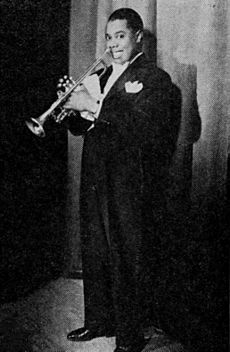
- Lale Anderson
- Harold Arlen
- Louis Armstrong
- Fred Astaire
- Count Basie
- Dalida
- Cab Calloway
- Eddie Cantor
- Nat King Cole
- Noël Coward
- Bing Crosby
- Vernon Duke
- Jimmy Durante
- Duke Ellington
- Ella Fitzgerald
- George Gershwin
- Ira Gershwin
- Benny Goodman
- Coleman Hawkins
- Billie Holiday
- Pete Johnson
- Louis Prima
- Artie Shaw
- Big Joe Turner
- Les Brown
- Lena Horne
- Al Jolson
- Jerome Kern
- Lead Belly
- The Ink Spots
- Glenn Miller
- Earl Hines
- Édith Piaf
- Cole Porter
- Ma Rainey
- Django Reinhardt
- Bill "Bojangles" Robinson
- Rodgers and Hart
- Frank Sinatra
- Bessie Smith
- Fats Waller
- Ethel Waters
Influential artists
Painters and sculptors
- José Clemente Orozco
- Anni Albers
- Josef Albers
- Hans Arp
- Milton Avery
- Romare Bearden
- Paula Modersohn-Becker
- Max Beckmann
- Thomas Hart Benton
- Max Bill
- Isabel Bishop
- Marcel Breuer
- Patrick Henry Bruce
- Paul Cadmus
- Marc Chagall
- John Steuart Curry
- Salvador Dalí
- Stuart Davis
- Charles Demuth
- Otto Dix
- Theo van Doesburg
- Arthur Dove
- Marcel Duchamp
- Max Ernst
- David Alfaro Siqueiros
- Philip Evergood
- Lyonel Feininger
- Joaquín Torres García
- Alberto Giacometti
- Arshile Gorky
- John D. Graham
- George Grosz
- Philip Guston
- Marsden Hartley
- Hans Hofmann
- Edward Hopper
- Johannes Itten
- Frida Kahlo
- Wassily Kandinsky
- Ernst Ludwig Kirchner
- Paul Klee
- Oskar Kokoschka
- Käthe Kollwitz
- Willem de Kooning
- Walt Kuhn
- Jacob Lawrence
- Tamara de Lempicka
- Fernand Léger
- Andrew Loomis
- Reginald Marsh
- André Masson
- Henri Matisse
- Joan Miró
- Piet Mondrian
- Gabriele Münter
- Georgia O'Keeffe
- Francis Picabia
- Pablo Picasso
- Horace Pippin
- Diego Rivera
- Ben Shahn
- Charles Sheeler
- David Smith
- Isaac Soyer
- Rafael Soyer
- Chaïm Soutine
- Rufino Tamayo
- Yves Tanguy
- Grant Wood
- N. C. Wyeth
- Andrew Wyeth
Photography

- Ansel Adams
- Margaret Bourke-White
- Walker Evans
- Lewis Hine
- Dorothea Lange
- Gordon Parks
- Man Ray
- Edward Steichen
- Carl Van Vechten
- Edward Weston
Sports figures
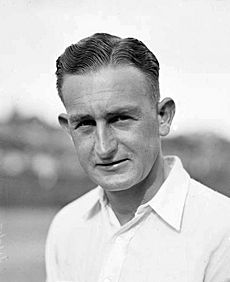
Global
- Cliff Bastin (English footballer)
- Donald Bradman (Australian cricketer)
- Haydn Bunton, Sr (Australian Rules footballer)
- Jack Crawford (tennis)
- Jack Dyer (Australian rules football player)
- Wally Hammond (English cricketer)
- Eddie Hapgood (English footballer)
- George Headley (West Indies cricketer)
- Alex James (Scottish footballer)
- Douglas Jardine (English cricketer)
- Harold Larwood (English cricketer)
- Jack Lovelock (New Zealand runner)
- Fred Perry (English tennis player)
- Leonard Hutton, English cricketer
- Percy Williams (sprinter)
- Dhyan Chand, Indian hockey player
- Lala Amarnath, Indian cricketer
United States
- Joe Louis (boxing)
- Lou Ambers (boxing)
- Henry Armstrong (boxing)
- Max Baer (boxing)
- Cliff Battles (halfback)
- Jay Berwanger (halfback)
- James J. Braddock (boxing)
- Ellison M. ("Tarzan") Brown (marathon)
- Don Budge (tennis)
- Tony Canzoneri (boxing)
- Mickey Cochrane (baseball)
- Buster Crabbe (swimming)
- Glenn Cunningham (running)
- Dizzy Dean (baseball)
- Joe DiMaggio (baseball)
- Babe Didrikson (track)
- Leo Durocher (baseball)
- Turk Edwards (tackle)
- Jimmie Foxx (baseball)
- Lou Gehrig (baseball)
- Hank Greenberg (baseball)
- Lefty Grove (baseball)
- Dixie Howell (halfback)
- Don Hutson (end)
- Cecil Isbell (quarterback)
- Bobby Jones (golf)
- John A. Kelley (marathon)
- Nile Kinnick (halfback)
- Tommy Loughran (boxing)
- Alice Marble (tennis)
- Ralph Metcalfe (sprinter)
- Bronko Nagurski (fullback)
- Mel Ott (baseball)
- Jesse Owens (sprinter)
- Satchel Paige (baseball)
- Bobby Riggs (tennis)
- Barney Ross (boxing)
- Babe Ruth (baseball)
- Al Simmons (baseball)
- Helen Stephens (track)
- Eddie Tolan (sprinter)
- Ellsworth Vines (tennis)
- Stella Walsh (sprinter)
- Frank Wykoff (sprinter)
Criminals
Prominent criminals of the Great Depression:
- Al Capone
- Bonnie and Clyde
- John Dillinger
- Baby Face Nelson
- Machine Gun Kelly
- Ma Barker
See also
 In Spanish: Años 1930 para niños
In Spanish: Años 1930 para niños
- Interwar period, worldwide
- International relations (1919–1939)
- Interwar Britain
- Great Depression
- Great Depression in the United States
- European interwar economy
- Causes of the Great Depression
- Cities in the Great Depression
- Dust Bowl
- Entertainment during the Great Depression
- Timeline of the Great Depression
- Timeline of events preceding World War II
- Events preceding World War II in Asia
- Events preceding World War II in Europe
- Areas annexed by Nazi Germany and the pre-war German territorial claims on them
- Diplomatic history of World War II
- European Civil War
- 1930s in literature
Timeline
The following articles contain brief timelines which list the most prominent events of the decade:


